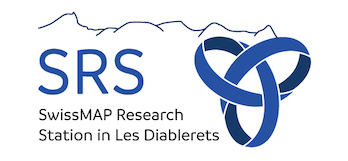The talk reviews how a geometric approach to information theory and the functional renormalization group are closely connected. Information geometry defines distances on spaces of probability distributions, as well as further differential geometric structure like connections or curvature. In the context of field theories one can define on that basis geometrical structure on the space of...
I present a probabilistic framework to analyse global Renormalization Group Flows in large theory spaces. The framework allows to efficiently find basins of attraction, including fixed points of the linearized flow, as well as novel nonlinear attractors. As a working example, I discuss the gauge, Yukawa, and Higgs sector of the Standard Model of particle physics. I will also comment on...
The physics of strongly correlated systems offers some of the most intriguing physics challenges such as competing orders or the emergences of dynamical composite degrees of freedom. Often, the resolution of these physics challenges is computationally hard, but can be enormously simplified by its formulation in the dynamical degrees of freedom and within an expansion about the physical ground...
I report on recent developments in model building and flavor phenomenology that is using RG-techniques and UV-safety.
I discuss the evolution of entanglement entropy for a massless field within a spherical region in an expanding background. The formalism is applied to the inflationary period and the subsequent era of radiation domination, starting from the Bunch-Davies vacuum. Each field mode evolves towards a squeezed state upon horizon exit during inflation, with additional squeezing when radiation...
Renormalization group flows of the Ginzburg-Landau potential of chiral symmetry restoration are calculated for a general number of quark flavors (N_f), with the inclusion of all possible (perturbatively) relevant and marginal operators in d = 3 spatial dimensions. We find new, potentially infrared stable fixed points spanned throughout the entire N_f range. By conjecturing that the thermal...
We show that in the local potential approximation of the functional renormalization group, and in the f(R) approximation to asymptotically safe gravity, a combination of Sturm-Liouville and WKB methods allows for an exact analytical solution for scaling dimensions of highly irrelevant operators. The results shed light on properties of these approximations and in particular on recent numerical...
In the renormalization group approach, it is known that inessential
couplings could be removed by the field redefinitions. Recently it is
pointed out that the quadratic curvature terms fall into this class of
operators, and next cubic term is irrelevant. This suggests that the
Einstein and cosmological term is enough to define asymptotically safe
quantum gravity for pure gravity. Here we...

